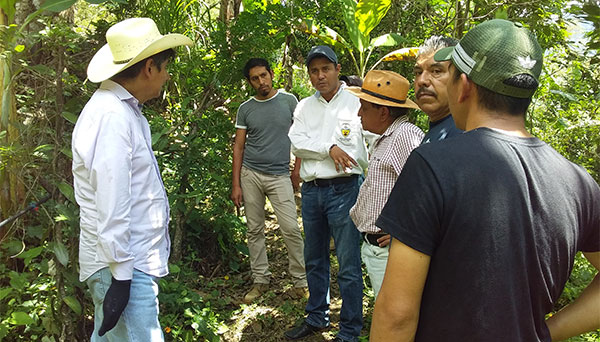Wastewater Sanitation and Reduction of Agrochemical Pollution and Flooding through Natural, Community-based and Educational Solutions
Organization: Central de Servicios para el Desarrollo de Puebla, A.C.
Purpose: To promote the comprehensive rural development of low-income persons, with the principals of respect for personal dignity, solidarity, subsidiarity, effectiveness and efficiency, and respect for nature.
Location: State of Puebla, municipalities of Jopala, Zihuateutla and Pahuatlán.
Communities benefiting directly from the project: Jopala, Chicontla and Patla (Jopala); Tecpatlán and Tenanguito (Zihuateutla); Xilepa, Acalapa and Linda Vista (Pahuatlán).
Country: Mexico
Other Organizations Involved: Environmental Engineering School of Universidad Popular Autónoma del Estado de Puebla; Institute of Sciences of Benemérita Universidad Autónoma de Puebla; Mayor's offices and local authorities; Colectivo de Jóvenes Profesionistas Campesinos, A.C.; Mundo Ambienta, A.C.
 @ Central de Servicios para el Desarrollo de Puebla, A.C.
@ Central de Servicios para el Desarrollo de Puebla, A.C.
Background
The region is located in the Eastern Sierra Madres. Due to the topography, violent water surges occur during the rainy season, causing flooding and human and material losses. While most communities have drainage, the sewers discharge directly into farmlands and bodies of water, polluting them. Moreover, chemical fertilizers and other agrochemicals, primarily pesticides, have been overused. The results of various analyses conducted on water intended for household consumption in lowland communities have shown the presence of nitrates from nitrogen-containing fertilizers.
However, communities are unaware of the possible environmental actions that can contribute to solving the problem. Therefore, the project proposes to advise and form community environmental promoters (CEPs) and community environmental committees (CECs), with people living in the towns, connected and committed to the environment.
Community environmental promoters (CEPs) will coordinate environmental actions in the communities and ensure the project's continuity and sustained impact. For their part, community environmental committee (CEC) members will be responsible for implementing those environmental actions, distributing resources that have been contributed and allocating responsibilities among residents in the participating community.
Goals
- 15 community environmental promoters (CEPs) trained.
- 8 community environmental committees (CECs) created (one per participating community), for a total of 80 trained members.
- 600 trained citizens.
- 24 natural storm surge containment walls and eight community artificial wetlands (one per community).
- 50 copies of a community environmental promoter (CEP) training manual and 80 copies of the training manual for community environmental committee (CEC) members.
Main activities
- Development of community environmental promoters (CEPs), with members of the communities impacted by the project.
- Creation of community environmental committees (CECs), which in the short term will carry out environmental actions for the benefit of the participating communities.
- Training, by community environmental promoters (CEPs), of community environmental committee (CEC) members to develop an “environmental community culture” in the communities benefiting from the project.
- Development of two training manuals: one for community environmental promoters (CEPs) and another for community environmental committee (CEC) members. These materials will be used to support the environmental actions set out in the project.
- Establishment of natural containment “walls” with bamboo plants.
- Reduction of chemical fertilizers used in farming, which pollute water for household consumption.
- Wastewater sanitation by establishing community artificial wetlands.
Outcomes
The environmental actions carried out within the project's framework will benefit the 8,149 residents in the three municipalities (18.36% of the population), thanks to wastewater sanitation; the reduction of human and material risks posed by flooding; a 50% reduction in the agricultural use of chemical fertilizers; and the substitution of pesticides with biological control agents. Starting in the third year, after the bamboo “walls” and artificial wetlands are set up, 400 tons of CO2 will be captured each year.